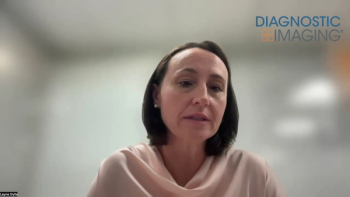
You Want a Piece of Me?
It's not just professional organizations costing us in dues and fees. There's a growing roster of entities eager to take pieces of us.
It seems to be membership renewal season again. Mailings from ACR, ARRS, RSNA, etc. have turned up, cheerfully reminding me how much I'll have to fork over to remain in their ranks.
While I might grouse about the ever-increasing sums they want (I'm told RSNA hiked its dues something like 22 percent this year), this isn't about to become a grumpfest over our various professional organizations. One might debate whether the services they offer are worth the prices they set; it is at least (thus far) voluntary for each radiologist whether or not to participate.
What isn't so hunky-dory in my book is the ever-growing roster of other entities eager to reach out and take pieces of us - especially those doing so with the leverage of government regulation/oversight, or at least taking advantage of mechanisms created by the same.
Usually, the claimed justification is that the cause is noble, and that the pieces they take out of us are small; we therefore stand to be cast as greedy and miserly if we balk. No matter that the causes aren't always so honorable (or efficacious), nor that all of these little pieces add up to not-so-little sums. Conversely, these pieces from numerous radiologists (not to mention other physicians) added up generate quite a bit of profitability and power for the piece-takers.
There are multiple levels of obnoxiousness when it comes to helping oneself to the fruits of someone else's labors. You might, for instance, look more kindly on a CME vendor or malpractice insurer because they at least compete for your business against others in their industries, and are thus under some sort of pressure to give you decent prices and/or quality. As opposed to, say, a hospital for which you are going to provide coverage socking you for a "credentialing fee" or a governmental edict that you shall give insurers a discount of 50 percent (or more!) anytime you image more than one body-part at a time.
I could include a much lengthier list of this parasitic rogues' gallery, but it's really not necessary. Just think about your typical workday, or the routine cast of characters on your ledger: Who's consuming your time, effort, and other resources, and in the process detracting from rather than contributing to your being a good professional, providing quality medical service, and (God forbid) building a business?
I bet you anything the worst offenders are the ones you have the least ability to get rid of.
Generally, the more someone taking a piece out of you depends on your having no choice (and better, no awareness!) in the matter, the sleazier it becomes. Goods and services of true worth remain on the market and flourish because customers recognize their value, in effect beating a path to the door of the better mousetrap's builder. If an entity instead chooses to rely on coercion, by whatever mechanism, it doesn't say much for that entity's offerings.
Maybe the barn doors have been open for so long that the livestock of our profession's clout is too far gone. One can hope, however, for a day when we will offer more resistance to being sliced up than a Thanksgiving-day pumpkin pie.
Newsletter
Stay at the forefront of radiology with the Diagnostic Imaging newsletter, delivering the latest news, clinical insights, and imaging advancements for today’s radiologists.



























